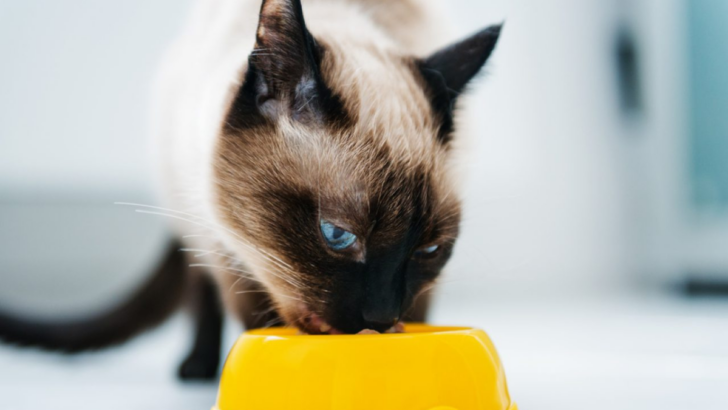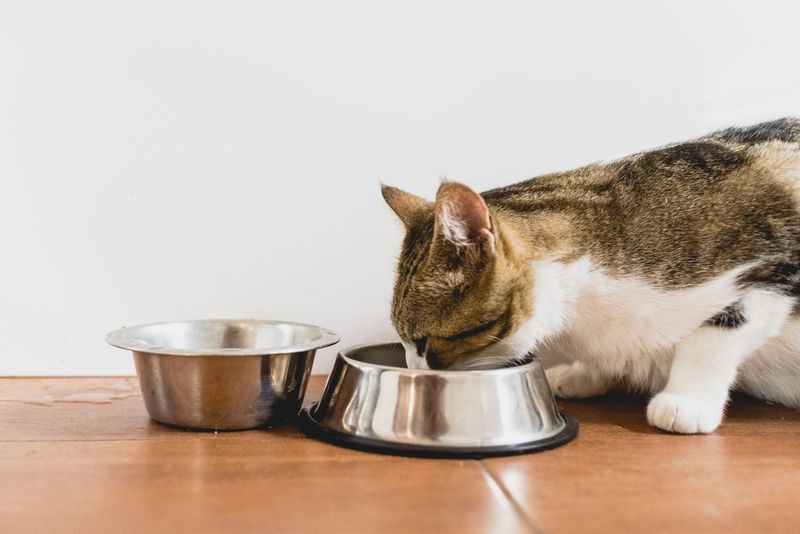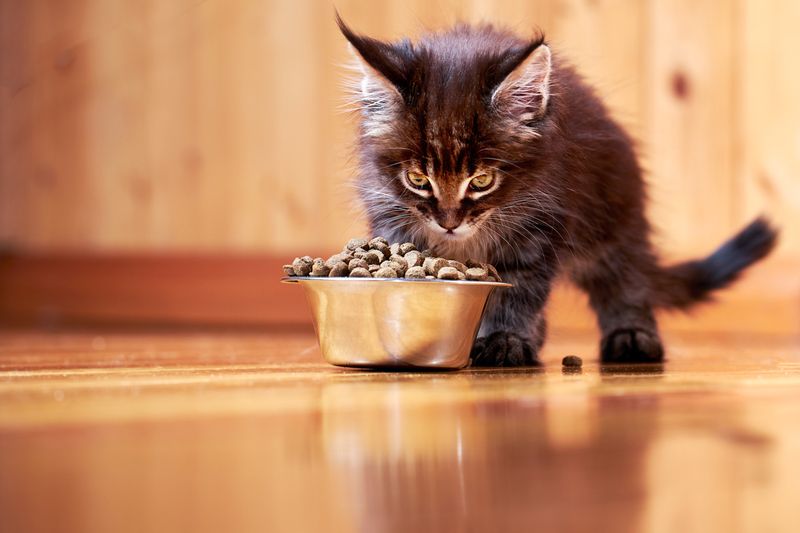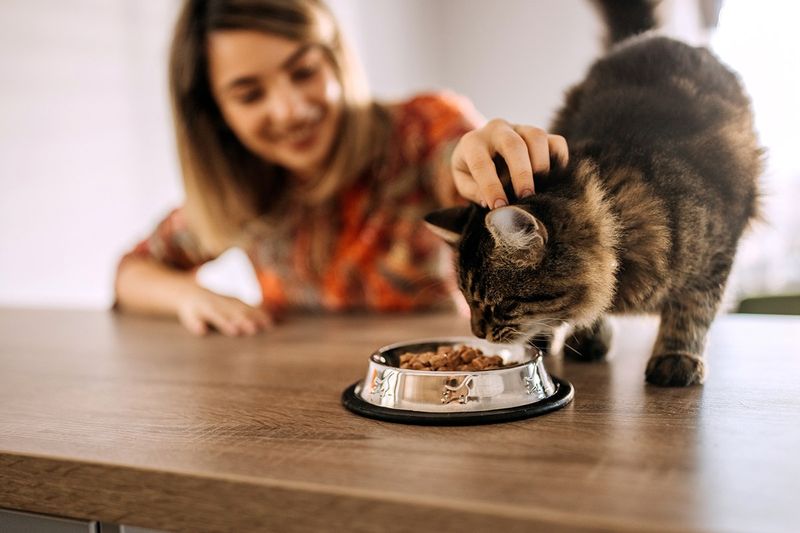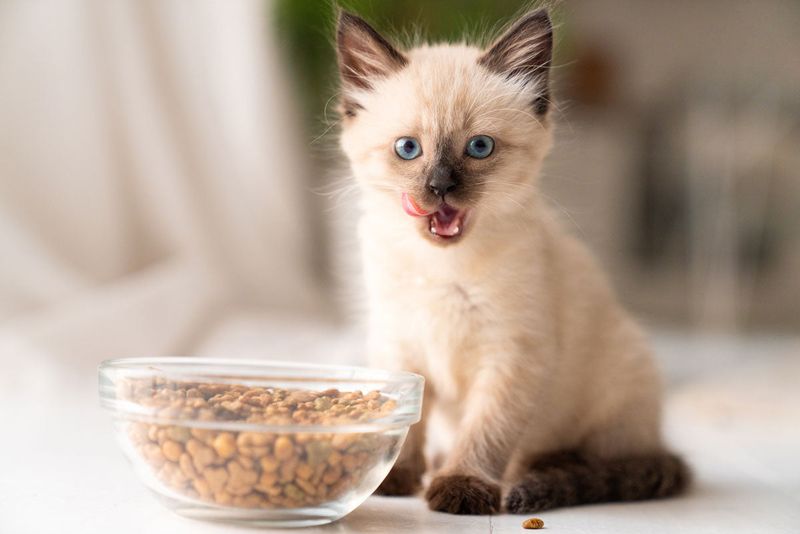Our feline friends don’t need much to be happy, but full tummies are definitely on the top of the list. Dry food can become too painful for older fluffs or simply too boring (because we all know cats are divas). That’s when you probably start wondering how to soften dry cat food and make your bestie enjoy it more.
If your fluffball’s teeth are getting too sensitive or your kitten starts meowing for more food, she might need something softer. But sometimes it’s simply too expensive to feed your purrincess canned food every day – and that’s completely fine.
Luckily, we’re happy to tell you that softening dry cat food is not rocket science and you don’t need much to make your furbaby happy and full. You probably already have everything you need and it doesn’t take much time, either.
Softening kibble is a purrfect way to feed your kitty something new while staying on budget and keeping up with her never-ending appetite. It sounds like every cat owner’s dream come true, doesn’t it?
Now, without further ado, let’s dive into different ways to soften dry cat food, so you can serve your new specialty of the house even today.
1. Water Is Your Best Friend

The easiest and simplest way to soften dry cat food is to add some water to it. Yes, it’s really that simple. All you need to do is add one part of water for every three parts of dry cat food and let it soak for no longer than 20 minutes. Clean tap water is sufficient. Make sure to never use hot water, though, as it can hurt your fluff. If you want to speed up the process, you can microwave it slightly – but make sure it’s not too hot.
If you’ve added too much water (where the kibble hasn’t soaked it up completely), don’t panic. Simply pour out the excess liquid so it doesn’t get soupy. To avoid this, try adding small amounts of water until the kibble is just soft enough.
2. Broth for Some Extra Flavor

Some cats simply don’t like the taste of kibble, and that’s totally okay. From time to time, our kitty cats need some extra encouragement to eat, which can be achieved by adding some extra flavor to their standard dry food. So, how to soften that dry cat food while also adding flavor to it? Well, it’s pretty simple. Instead of water, try adding broth. If you opt for this, make sure the broth you use is cat-intended like this one from Tiki Cat.
The broth we eat contains added fats and sodium, which you definitely want to keep out of your cat’s diet. If you still decide to go for homemade broth, make sure it’s unsalted. To soften dry cat food with broth, use the same method as with water. The only difference is, you’ll be adding more flavor to it, and you might make your picky eater even happier.
3. Cream It Up with a Blender
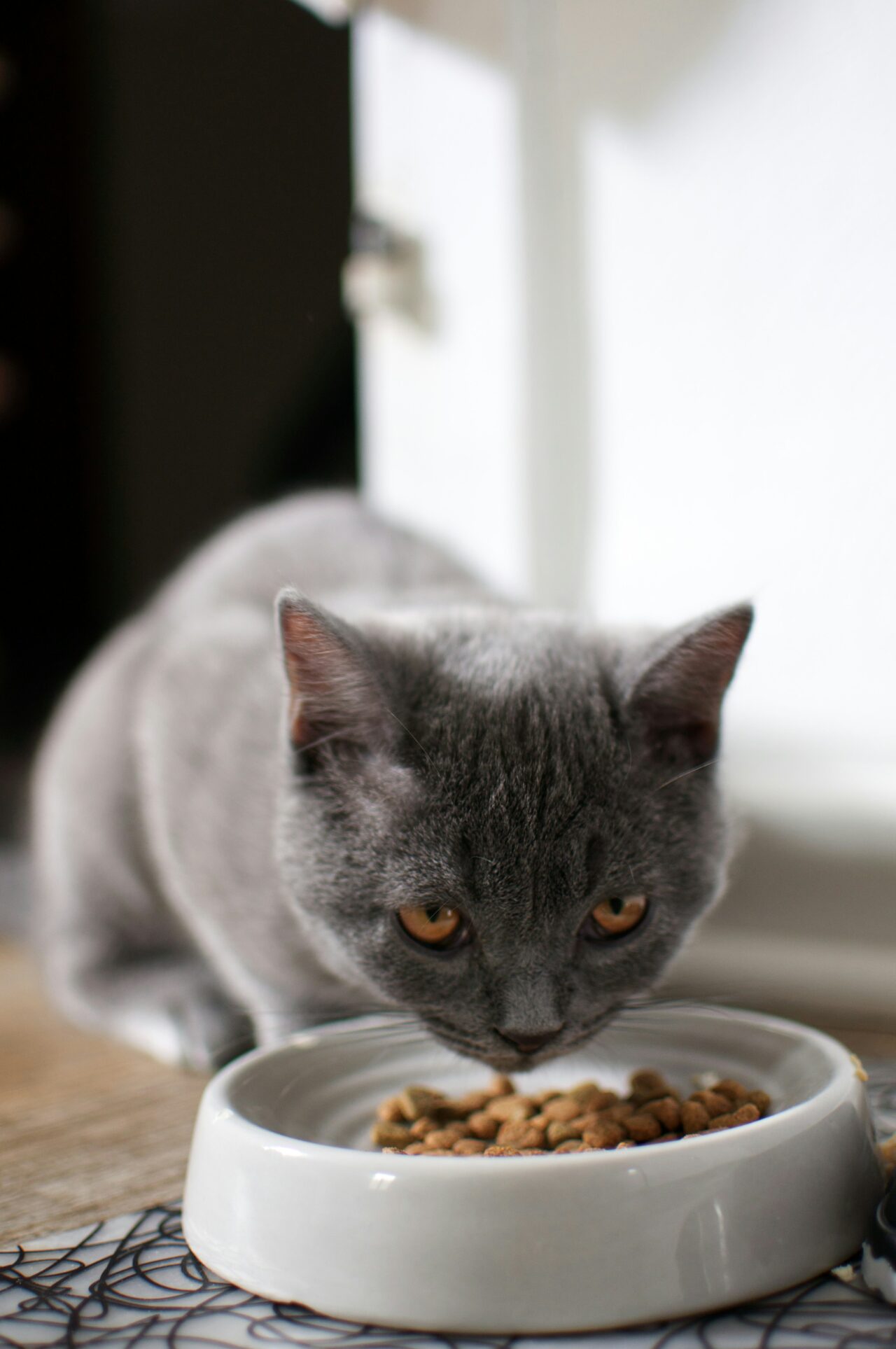
Cats with dental problems will probably enjoy this method the best. If your fuzz ball’s teeth are hurting, she’ll probably avoid eating dry kibble at all costs. That’s when your blender might come in real handy. For dental issues, simply softening dry cat food might not be enough. It’s often that older cats can’t use their teeth at all, which is when creamy food becomes their saving grace.
To make your cat’s kibble creamy, start by adding water or broth to it and let it soak for about 15-20 minutes. If you think you’ve added too much water, you can remove the excess. But since you’ll be making a creamy texture anyway, you don’t have to stress about removing all of it. This is when your blender takes the leading role. Simply add the softened food into it and blend until smooth. If it’s not creamy enough, you can always add a little more water to it, or more kibble if it turned out too soupy.
4. Kitten Formula for a Fuller Tummy
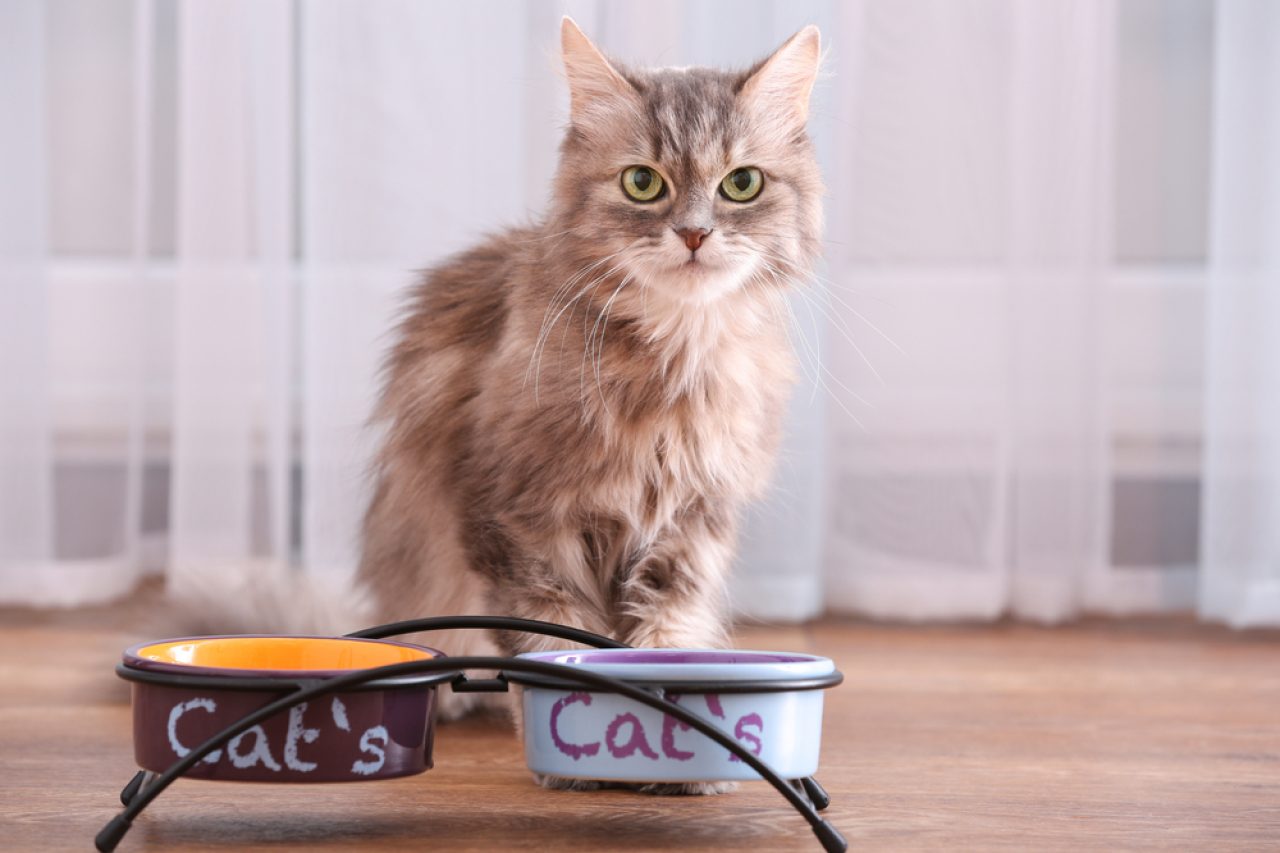
Your kitten might find the water method just fine, and it’s a safe option considering the baby’s sensitive digestive system. However, using the kitten formula might be an even better option as it adds some extra calories to the kibble. If your kitten is having trouble weaning or she’s refusing to eat, this method is probably the best. Not only does it make the meal more filling, but it’s also creamier, which makes food more appetizing for your furbaby. It’s a great way to gently introduce your kitten to new textures and flavors.
This method is the best way to help your small ball of joy transition to big-kitty food. The process is the same as softening food with water, only this time you’ll use kitten formula. Over time, you can use less and less liquid, so that she gets used to a more chewable consistency.
5. Mixing In Wet Food for the Best of Both Worlds
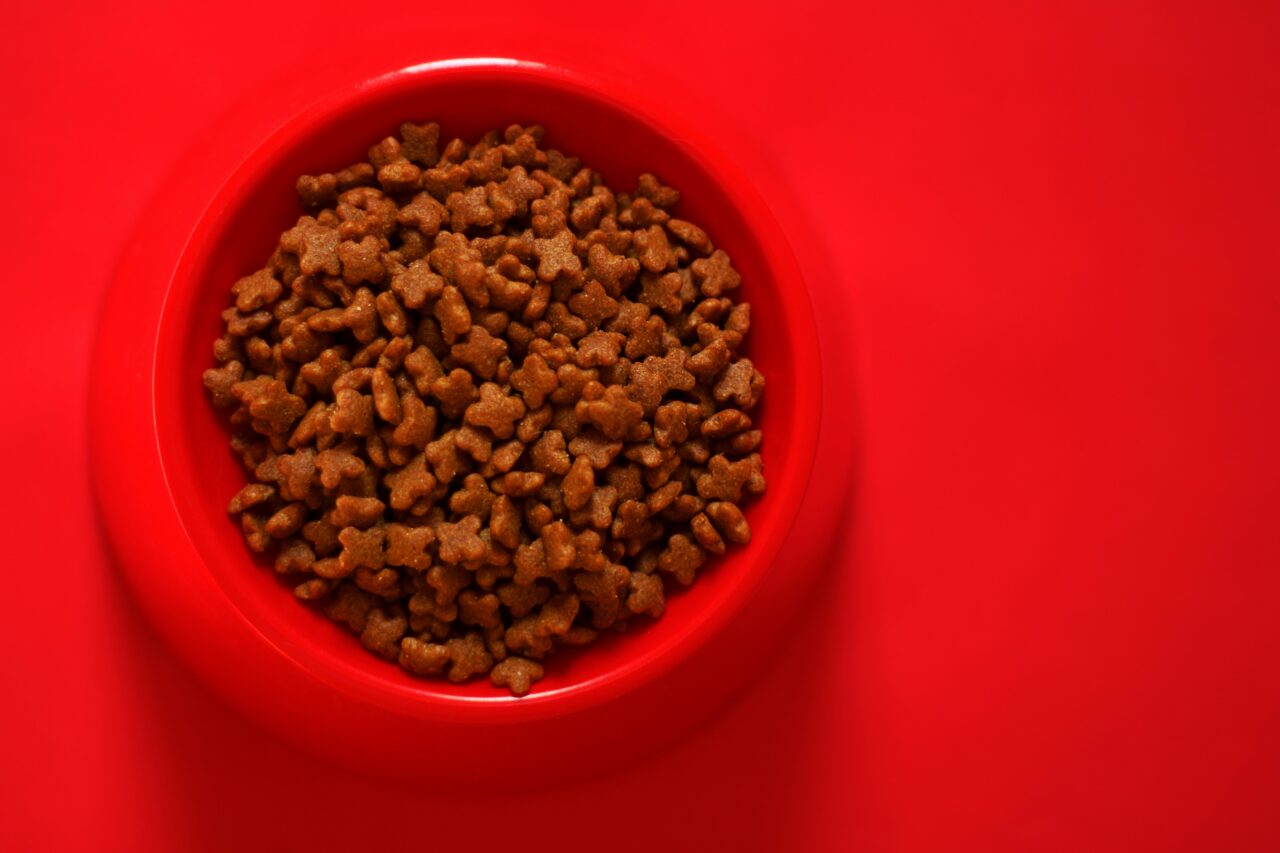
Our feline kings and queens deserve some extra special treatment. If they don’t like the consistency or taste of dry kibble, why not give them the best of both worlds? Mix canned food with dry cat food and watch their eyes sparkle with joy. The ratio of wet to dry food is up to you and what your cat likes the best, so you can experiment a few times until you find the purrfect mixture.
Not only does mixing both foods make a super tasty meal, but it also provides your feline friend with all the nutrients and moisture they need. And it’s a great way to help you manage your cat’s weight, while also promoting healthy metabolism and improving taste.
6. Add a Bit of Pumpkin Puree
Pumpkin puree is not only a tasty treat for cats but also a healthy one. By adding a small amount to dry cat food, you can enhance its moisture content and make it easier for your cat to chew. The puree’s natural sweetness and fiber content aid digestion, making it a win-win. Simply mix a spoonful into your cat’s meal.
Ensure the puree is plain and free from spices. This method is especially beneficial for older cats with dental issues. Not only does it soften the food, but it also adds nutritional value to their diet.
7. Try a Small Amount of Olive Oil
A teaspoon of olive oil can do wonders for your cat’s dry food, providing extra moisture and flavor. Not only does it soften the kibble, but it also promotes a glossy coat and aids in digestion.
Make sure to use extra virgin olive oil for the best results. It’s important to introduce this gradually to avoid upsetting your cat’s stomach. Many cats enjoy the rich taste olive oil adds. Combined with its softening effects, it becomes a delightful treat for your cat’s daily meals.
8. Soak with Low-Sodium Chicken or Beef Stock
To boost flavor and soften dry cat food, soak it in chicken or beef stock. Be sure to select a low-sodium variety for your pet’s health. Pour a small amount over the kibble and allow it to sit for a few minutes.
This not only softens the food but infuses it with a savory taste that cats love. It’s perfect for picky eaters who might otherwise turn up their noses at dry food. Stock adds a wholesome, nourishing element, making mealtime enjoyable and nutritious.
9. Use a Bit of Coconut Oil for Added Moisture
Coconut oil is a versatile supplement that can benefit your cat’s diet. Adding a small amount to dry food can enhance moisture content, making it softer and more digestible.
Coconut oil supports skin and coat health and provides a mild, appealing flavor. Start with a tiny amount and observe your cat’s reaction. This tropical treat can turn regular kibble into a gourmet experience, encouraging even the most fussy eaters to dig in.
10. Let the Food Sit in a Covered Dish to Rehydrate
Allowing dry cat food to sit in a covered dish with added water can help it rehydrate effectively. By letting it soak for approximately 15-20 minutes, the kibble absorbs the moisture, becoming softer and more palatable.
This technique is simple and doesn’t require any special ingredients. It’s especially helpful for cats with dental problems who struggle with hard food. The process enhances the natural flavors, making the meal more tempting. Ensuring the food is at room temperature before serving is crucial for your cat’s safety and comfort.
